In an interview earlier this year with Belgian newspaper De Tijd, Brodzki, now 93, expressed his worry for the future of his building.
Completed in 1967, the structure was home to the headquarters of cement company CBR. It is located closeby to the Sonian forest and is a landmark of the city.
Many credit the building with birthing a “new wave” of Belgian architecture, due to its somewhat unconventional design that saw 756 prefabricated oval concrete modules pieced together to form a facade.
With that in mind, it is easy to understand Brodzki’s initial anxieties towards the building’s proposed makeover.
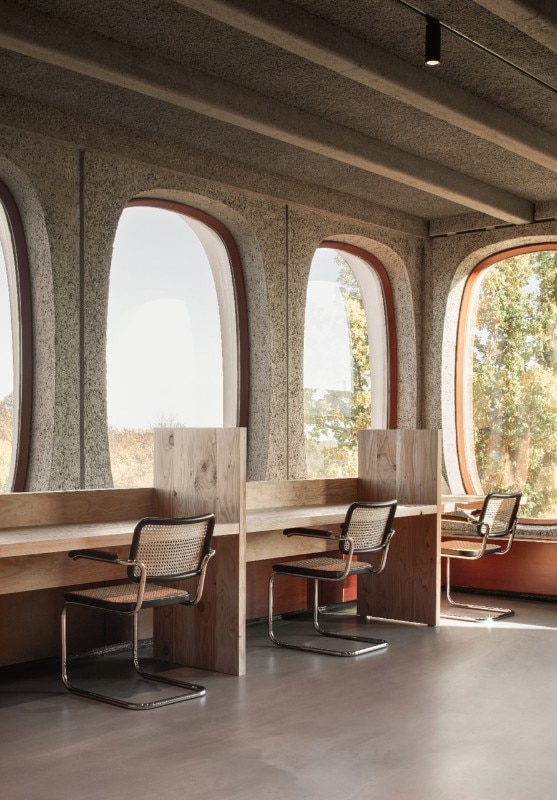
"Frankly, I'm afraid of the future of my CBR building,” he told De Tijd in May. “The owner is an investment group that already bought my Swift building at the time. And they have really massacred that.”
“It would be a shame if all authentic interior elements were to die. I really decided everything in this building. Up to and including the buttons for the lift.”
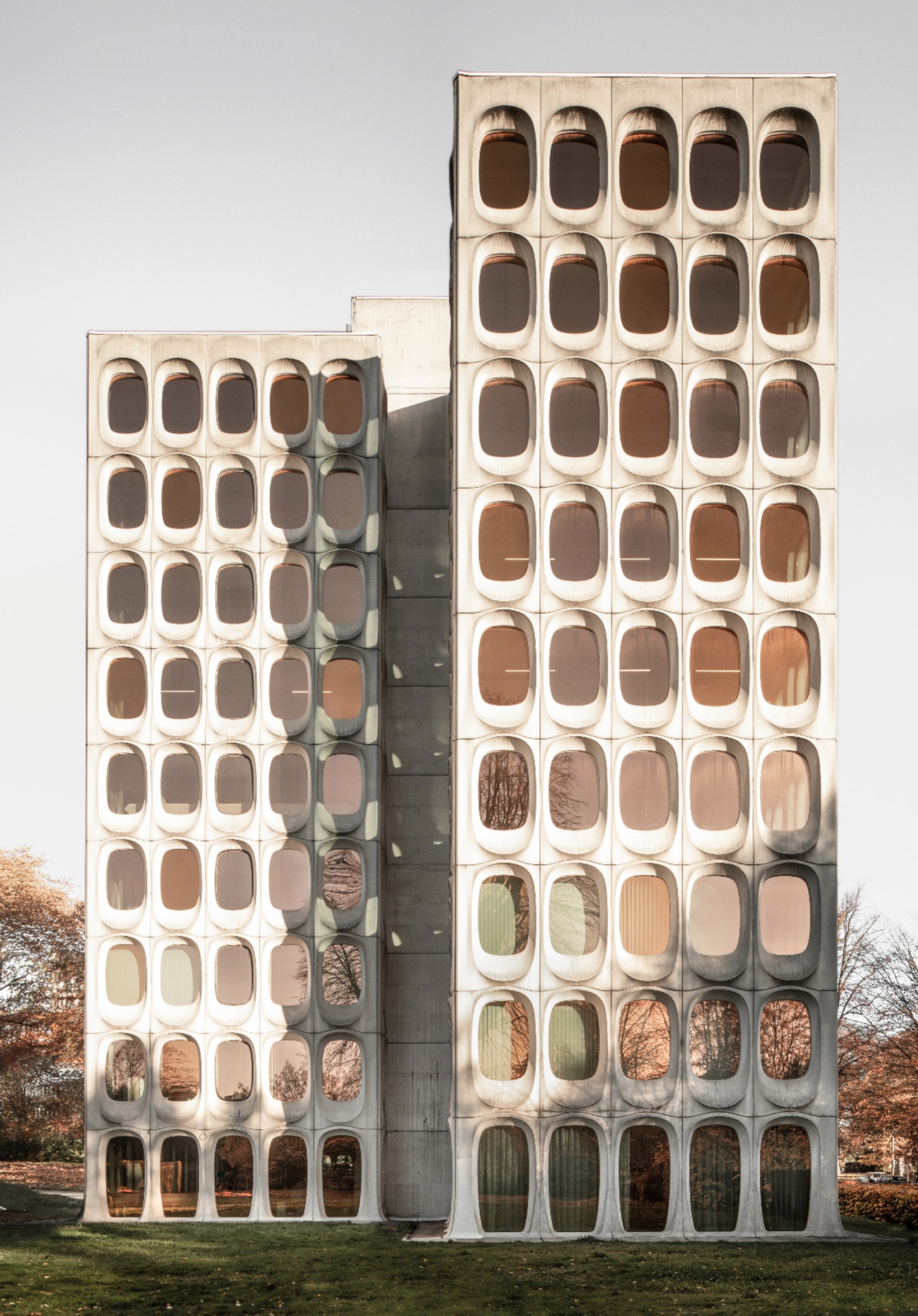
 View gallery
View gallery
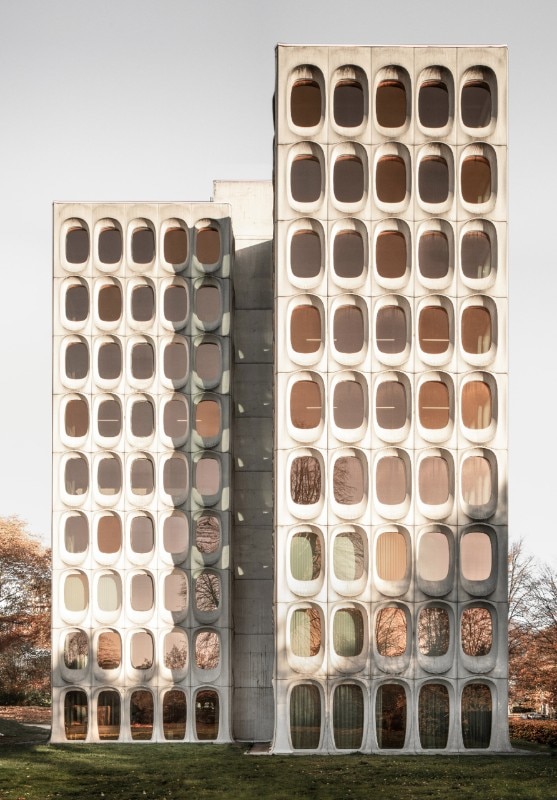
A modernist Brussels icon is transformed into luxury coworking space
Coworking compnay Fosbury & Sons has adapted Constantin Brodzki’s CBR building to create a seven-floor workspace, complete with interiors designed to be sympathetic to the original architecture.
Fosbury & Sons, Brussels, Beglium, 2018
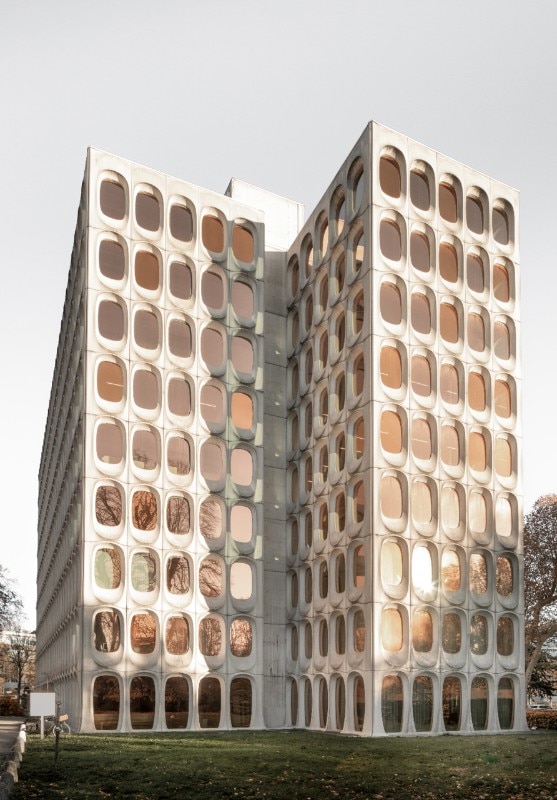
A modernist Brussels icon is transformed into luxury coworking space
Coworking compnay Fosbury & Sons has adapted Constantin Brodzki’s CBR building to create a seven-floor workspace, complete with interiors designed to be sympathetic to the original architecture.
Fosbury & Sons, Brussels, Beglium, 2018
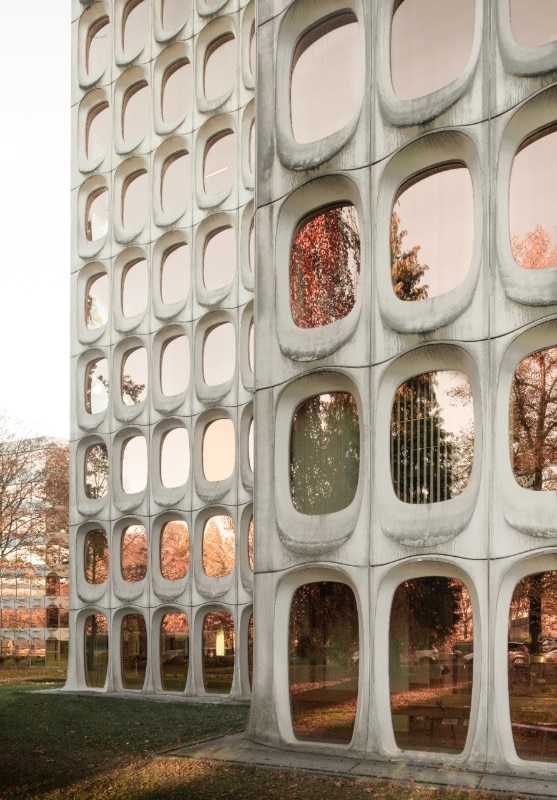
A modernist Brussels icon is transformed into luxury coworking space
Coworking compnay Fosbury & Sons has adapted Constantin Brodzki’s CBR building to create a seven-floor workspace, complete with interiors designed to be sympathetic to the original architecture.
Fosbury & Sons, Brussels, Beglium, 2018
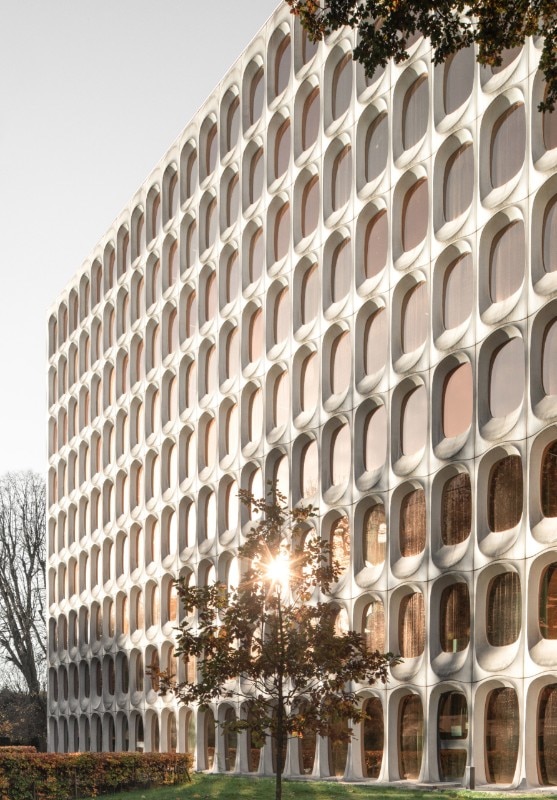
A modernist Brussels icon is transformed into luxury coworking space
Coworking compnay Fosbury & Sons has adapted Constantin Brodzki’s CBR building to create a seven-floor workspace, complete with interiors designed to be sympathetic to the original architecture.
Fosbury & Sons, Brussels, Beglium, 2018
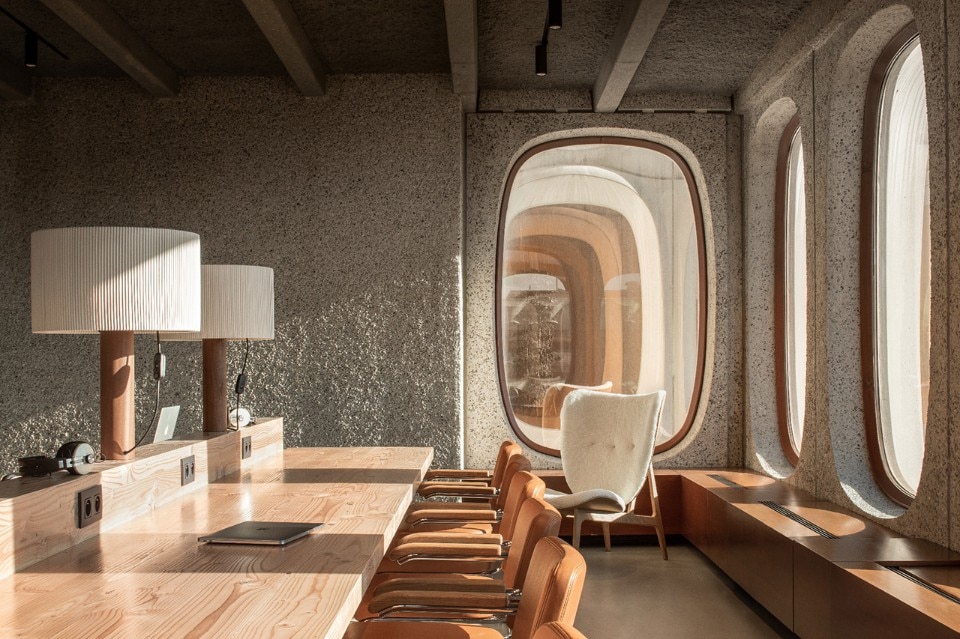
A modernist Brussels icon is transformed into luxury coworking space
Coworking compnay Fosbury & Sons has adapted Constantin Brodzki’s CBR building to create a seven-floor workspace, complete with interiors designed to be sympathetic to the original architecture.
Fosbury & Sons, Brussels, Beglium, 2018
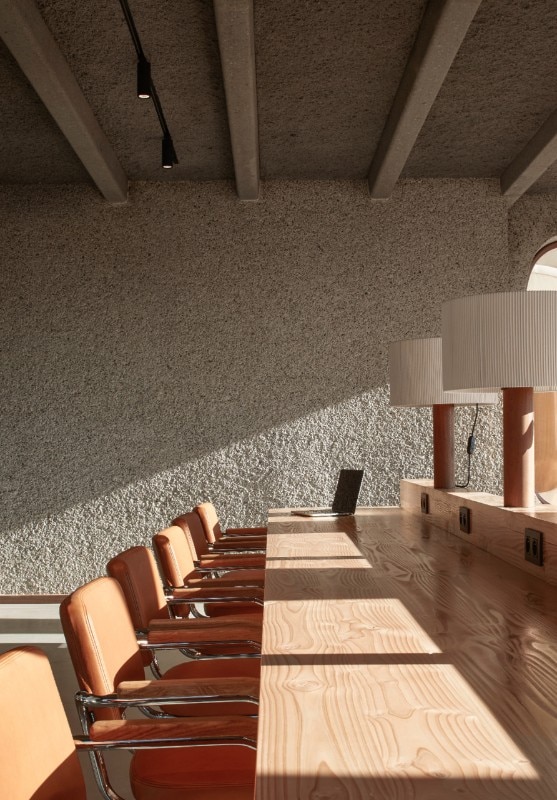
A modernist Brussels icon is transformed into luxury coworking space
Coworking compnay Fosbury & Sons has adapted Constantin Brodzki’s CBR building to create a seven-floor workspace, complete with interiors designed to be sympathetic to the original architecture.
Fosbury & Sons, Brussels, Beglium, 2018
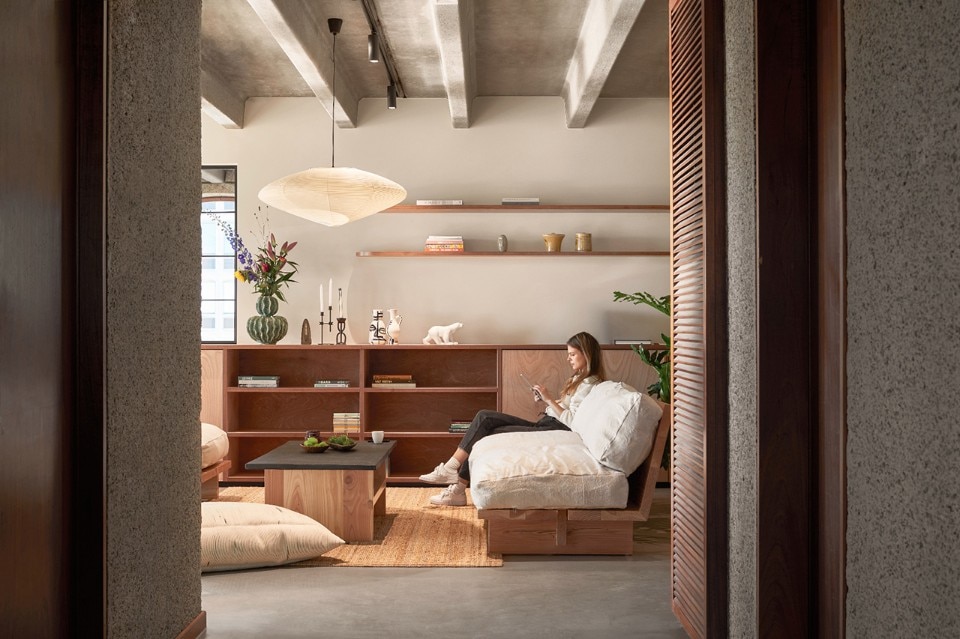
A modernist Brussels icon is transformed into luxury coworking space
Coworking compnay Fosbury & Sons has adapted Constantin Brodzki’s CBR building to create a seven-floor workspace, complete with interiors designed to be sympathetic to the original architecture.
Fosbury & Sons, Brussels, Beglium, 2018
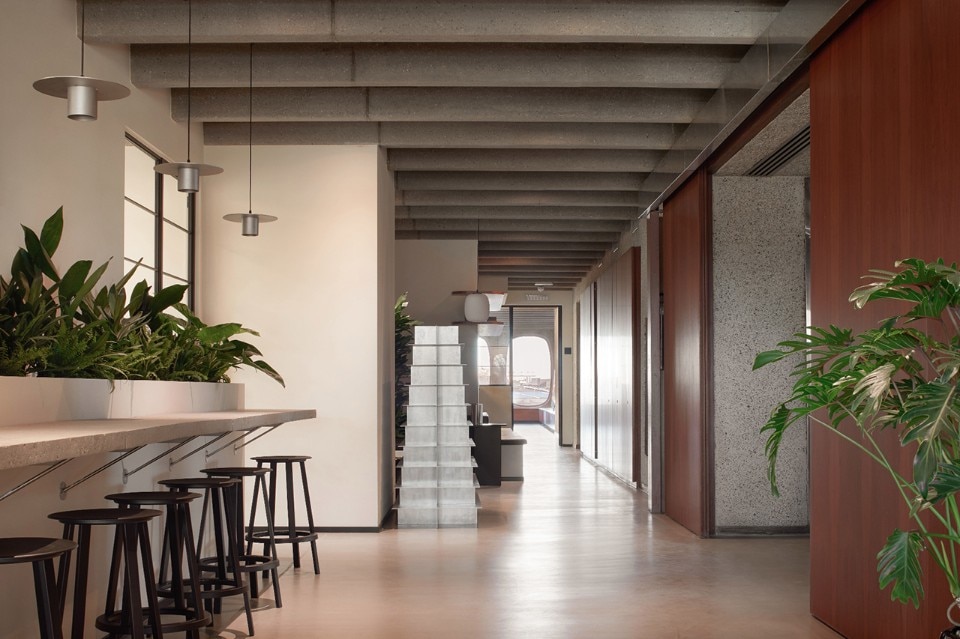
A modernist Brussels icon is transformed into luxury coworking space
Coworking compnay Fosbury & Sons has adapted Constantin Brodzki’s CBR building to create a seven-floor workspace, complete with interiors designed to be sympathetic to the original architecture.
Fosbury & Sons, Brussels, Beglium, 2018
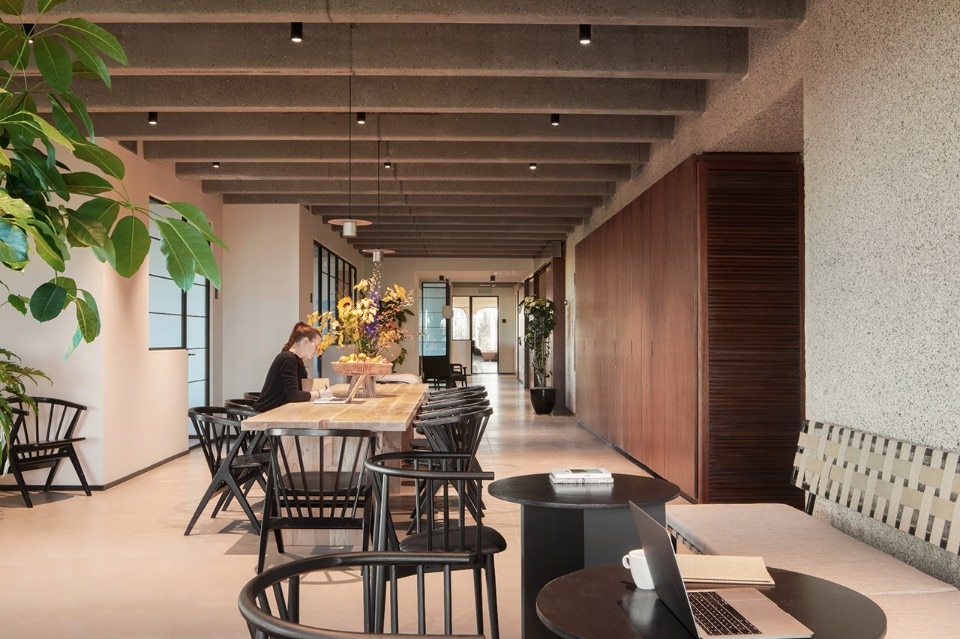
A modernist Brussels icon is transformed into luxury coworking space
Coworking compnay Fosbury & Sons has adapted Constantin Brodzki’s CBR building to create a seven-floor workspace, complete with interiors designed to be sympathetic to the original architecture.
Fosbury & Sons, Brussels, Beglium, 2018
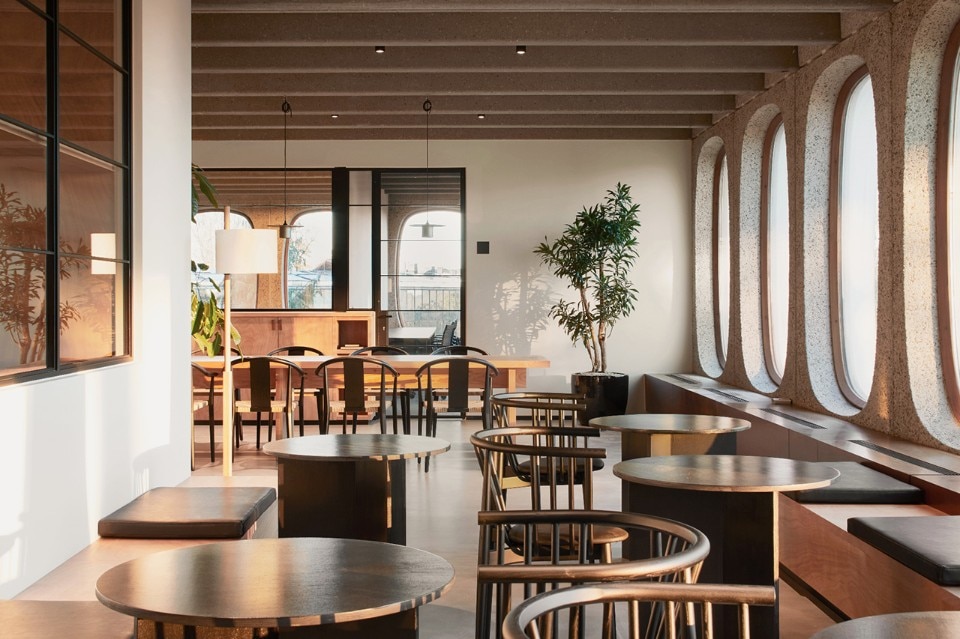
A modernist Brussels icon is transformed into luxury coworking space
Coworking compnay Fosbury & Sons has adapted Constantin Brodzki’s CBR building to create a seven-floor workspace, complete with interiors designed to be sympathetic to the original architecture.
Fosbury & Sons, Brussels, Beglium, 2018
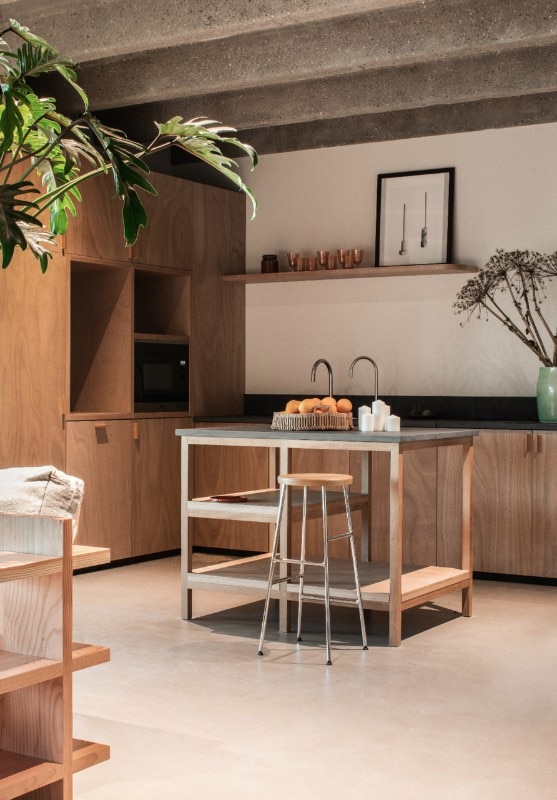
A modernist Brussels icon is transformed into luxury coworking space
Coworking compnay Fosbury & Sons has adapted Constantin Brodzki’s CBR building to create a seven-floor workspace, complete with interiors designed to be sympathetic to the original architecture.
Fosbury & Sons, Brussels, Beglium, 2018
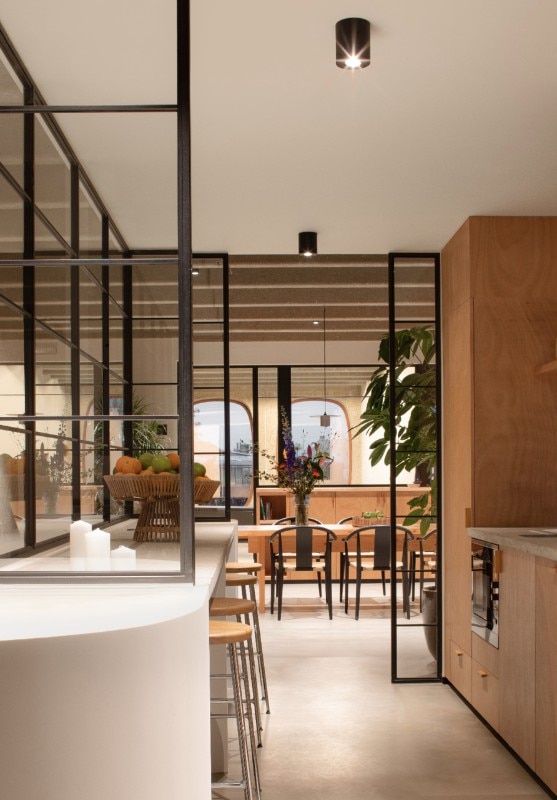
A modernist Brussels icon is transformed into luxury coworking space
Coworking compnay Fosbury & Sons has adapted Constantin Brodzki’s CBR building to create a seven-floor workspace, complete with interiors designed to be sympathetic to the original architecture.
Fosbury & Sons, Brussels, Beglium, 2018
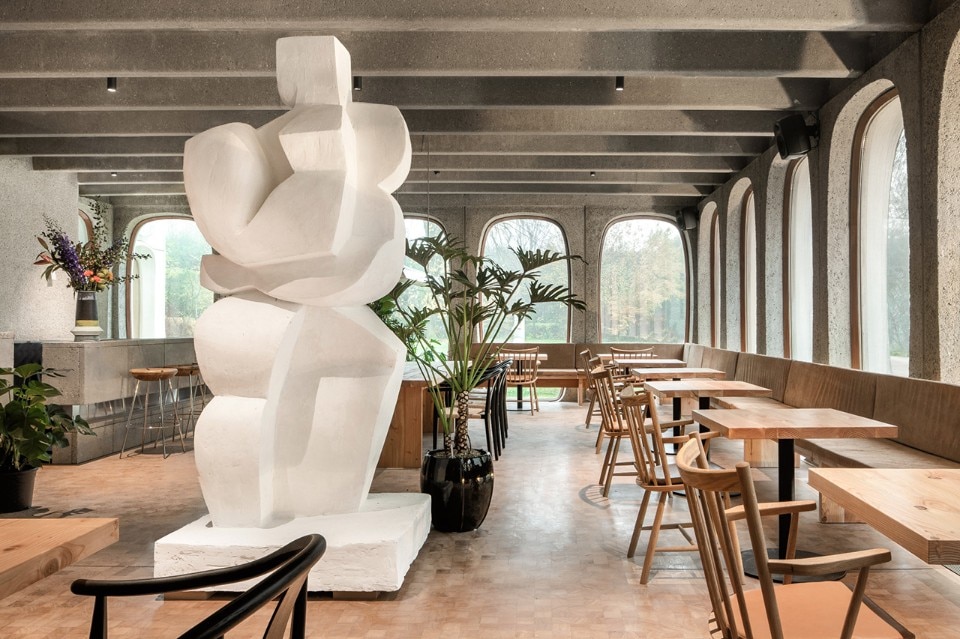
A modernist Brussels icon is transformed into luxury coworking space
Coworking compnay Fosbury & Sons has adapted Constantin Brodzki’s CBR building to create a seven-floor workspace, complete with interiors designed to be sympathetic to the original architecture.
Fosbury & Sons, Brussels, Beglium, 2018
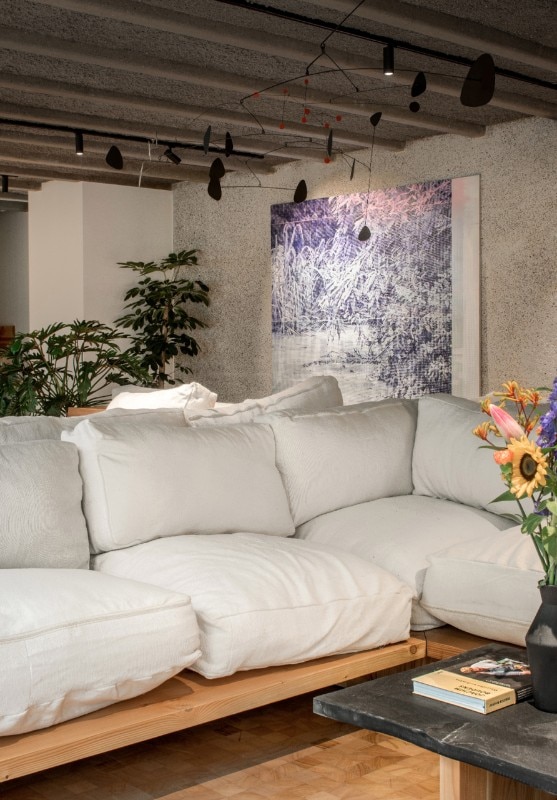
A modernist Brussels icon is transformed into luxury coworking space
Coworking compnay Fosbury & Sons has adapted Constantin Brodzki’s CBR building to create a seven-floor workspace, complete with interiors designed to be sympathetic to the original architecture.
Fosbury & Sons, Brussels, Beglium, 2018
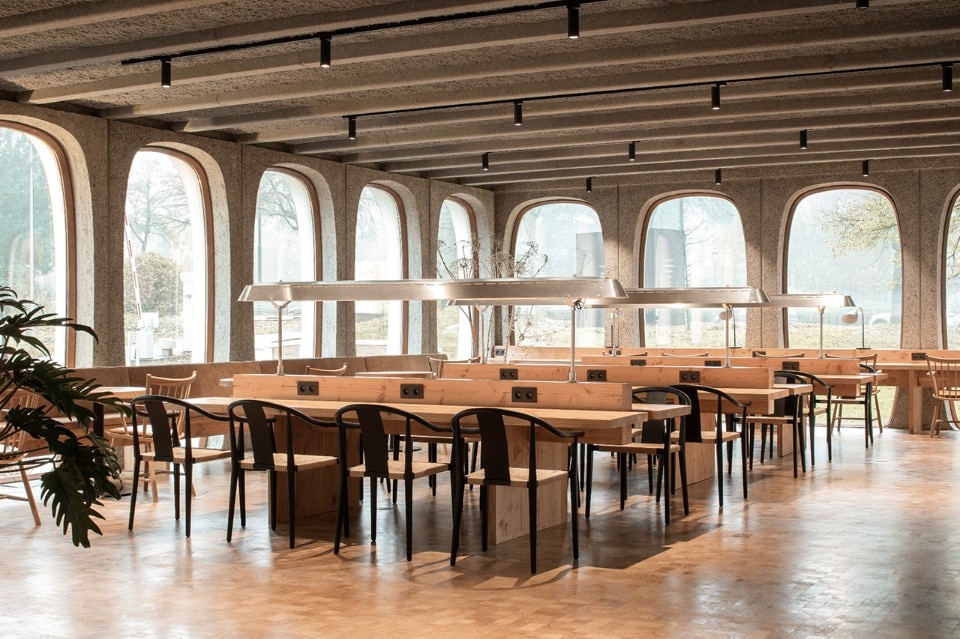
A modernist Brussels icon is transformed into luxury coworking space
Coworking compnay Fosbury & Sons has adapted Constantin Brodzki’s CBR building to create a seven-floor workspace, complete with interiors designed to be sympathetic to the original architecture.
Fosbury & Sons, Brussels, Beglium, 2018
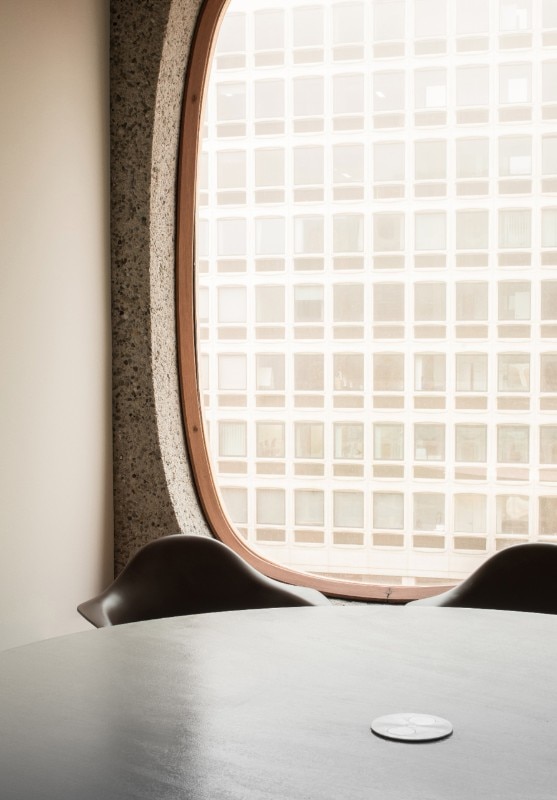
A modernist Brussels icon is transformed into luxury coworking space
Coworking compnay Fosbury & Sons has adapted Constantin Brodzki’s CBR building to create a seven-floor workspace, complete with interiors designed to be sympathetic to the original architecture.
Fosbury & Sons, Brussels, Beglium, 2018
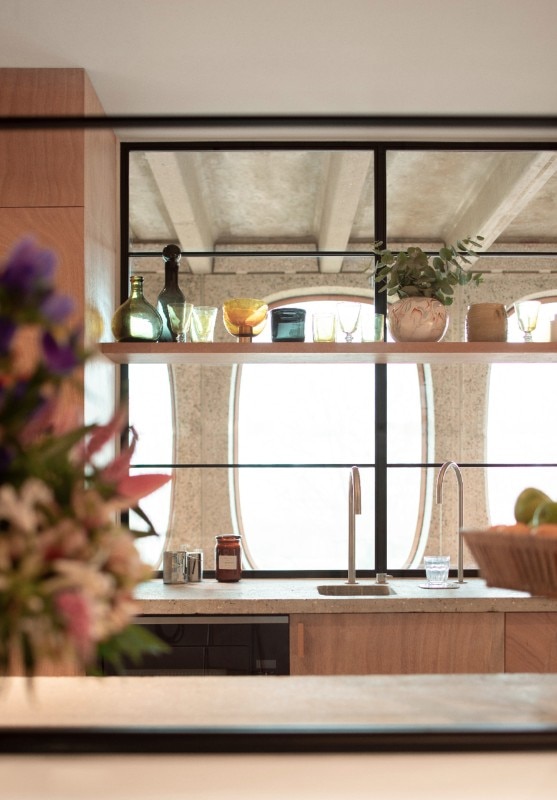
A modernist Brussels icon is transformed into luxury coworking space
Coworking compnay Fosbury & Sons has adapted Constantin Brodzki’s CBR building to create a seven-floor workspace, complete with interiors designed to be sympathetic to the original architecture.
Fosbury & Sons, Brussels, Beglium, 2018
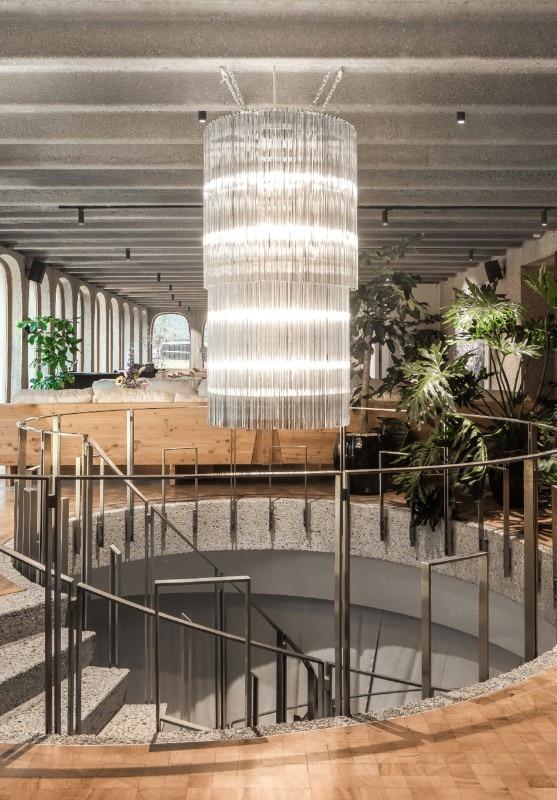
A modernist Brussels icon is transformed into luxury coworking space
Coworking compnay Fosbury & Sons has adapted Constantin Brodzki’s CBR building to create a seven-floor workspace, complete with interiors designed to be sympathetic to the original architecture.
Fosbury & Sons, Brussels, Beglium, 2018
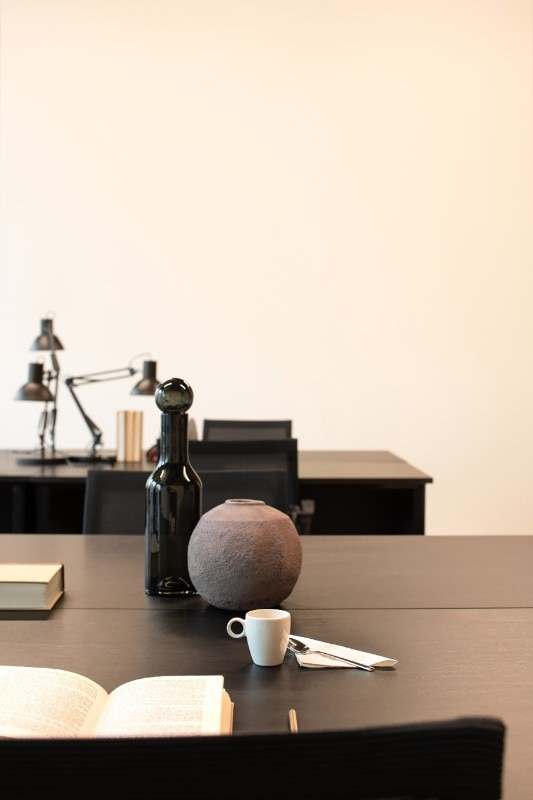
A modernist Brussels icon is transformed into luxury coworking space
Coworking compnay Fosbury & Sons has adapted Constantin Brodzki’s CBR building to create a seven-floor workspace, complete with interiors designed to be sympathetic to the original architecture.
Fosbury & Sons, Brussels, Beglium, 2018

A modernist Brussels icon is transformed into luxury coworking space
Coworking compnay Fosbury & Sons has adapted Constantin Brodzki’s CBR building to create a seven-floor workspace, complete with interiors designed to be sympathetic to the original architecture.
Fosbury & Sons, Brussels, Beglium, 2018

A modernist Brussels icon is transformed into luxury coworking space
Coworking compnay Fosbury & Sons has adapted Constantin Brodzki’s CBR building to create a seven-floor workspace, complete with interiors designed to be sympathetic to the original architecture.
Fosbury & Sons, Brussels, Beglium, 2018

A modernist Brussels icon is transformed into luxury coworking space
Coworking compnay Fosbury & Sons has adapted Constantin Brodzki’s CBR building to create a seven-floor workspace, complete with interiors designed to be sympathetic to the original architecture.
Fosbury & Sons, Brussels, Beglium, 2018

A modernist Brussels icon is transformed into luxury coworking space
Coworking compnay Fosbury & Sons has adapted Constantin Brodzki’s CBR building to create a seven-floor workspace, complete with interiors designed to be sympathetic to the original architecture.
Fosbury & Sons, Brussels, Beglium, 2018

A modernist Brussels icon is transformed into luxury coworking space
Coworking compnay Fosbury & Sons has adapted Constantin Brodzki’s CBR building to create a seven-floor workspace, complete with interiors designed to be sympathetic to the original architecture.
Fosbury & Sons, Brussels, Beglium, 2018

A modernist Brussels icon is transformed into luxury coworking space
Coworking compnay Fosbury & Sons has adapted Constantin Brodzki’s CBR building to create a seven-floor workspace, complete with interiors designed to be sympathetic to the original architecture.
Fosbury & Sons, Brussels, Beglium, 2018

A modernist Brussels icon is transformed into luxury coworking space
Coworking compnay Fosbury & Sons has adapted Constantin Brodzki’s CBR building to create a seven-floor workspace, complete with interiors designed to be sympathetic to the original architecture.
Fosbury & Sons, Brussels, Beglium, 2018

A modernist Brussels icon is transformed into luxury coworking space
Coworking compnay Fosbury & Sons has adapted Constantin Brodzki’s CBR building to create a seven-floor workspace, complete with interiors designed to be sympathetic to the original architecture.
Fosbury & Sons, Brussels, Beglium, 2018

A modernist Brussels icon is transformed into luxury coworking space
Coworking compnay Fosbury & Sons has adapted Constantin Brodzki’s CBR building to create a seven-floor workspace, complete with interiors designed to be sympathetic to the original architecture.
Fosbury & Sons, Brussels, Beglium, 2018

A modernist Brussels icon is transformed into luxury coworking space
Coworking compnay Fosbury & Sons has adapted Constantin Brodzki’s CBR building to create a seven-floor workspace, complete with interiors designed to be sympathetic to the original architecture.
Fosbury & Sons, Brussels, Beglium, 2018

A modernist Brussels icon is transformed into luxury coworking space
Coworking compnay Fosbury & Sons has adapted Constantin Brodzki’s CBR building to create a seven-floor workspace, complete with interiors designed to be sympathetic to the original architecture.
Fosbury & Sons, Brussels, Beglium, 2018

A modernist Brussels icon is transformed into luxury coworking space
Coworking compnay Fosbury & Sons has adapted Constantin Brodzki’s CBR building to create a seven-floor workspace, complete with interiors designed to be sympathetic to the original architecture.
Fosbury & Sons, Brussels, Beglium, 2018

A modernist Brussels icon is transformed into luxury coworking space
Coworking compnay Fosbury & Sons has adapted Constantin Brodzki’s CBR building to create a seven-floor workspace, complete with interiors designed to be sympathetic to the original architecture.
Fosbury & Sons, Brussels, Beglium, 2018

A modernist Brussels icon is transformed into luxury coworking space
Coworking compnay Fosbury & Sons has adapted Constantin Brodzki’s CBR building to create a seven-floor workspace, complete with interiors designed to be sympathetic to the original architecture.
Fosbury & Sons, Brussels, Beglium, 2018

A modernist Brussels icon is transformed into luxury coworking space
Coworking compnay Fosbury & Sons has adapted Constantin Brodzki’s CBR building to create a seven-floor workspace, complete with interiors designed to be sympathetic to the original architecture.
Fosbury & Sons, Brussels, Beglium, 2018

A modernist Brussels icon is transformed into luxury coworking space
Coworking compnay Fosbury & Sons has adapted Constantin Brodzki’s CBR building to create a seven-floor workspace, complete with interiors designed to be sympathetic to the original architecture.
Fosbury & Sons, Brussels, Beglium, 2018

A modernist Brussels icon is transformed into luxury coworking space
Coworking compnay Fosbury & Sons has adapted Constantin Brodzki’s CBR building to create a seven-floor workspace, complete with interiors designed to be sympathetic to the original architecture.
Fosbury & Sons, Brussels, Beglium, 2018

A modernist Brussels icon is transformed into luxury coworking space
Coworking compnay Fosbury & Sons has adapted Constantin Brodzki’s CBR building to create a seven-floor workspace, complete with interiors designed to be sympathetic to the original architecture.
Fosbury & Sons, Brussels, Beglium, 2018

A modernist Brussels icon is transformed into luxury coworking space
Coworking compnay Fosbury & Sons has adapted Constantin Brodzki’s CBR building to create a seven-floor workspace, complete with interiors designed to be sympathetic to the original architecture.
Fosbury & Sons, Brussels, Beglium, 2018
Thankfully, this appears to have been at the forefront of the minds of Fosbury & Sons.
The Antwerp coworking company set to work with adapting seven of the building's nine floors to create a range of private office “suites”, semi-private “ateliers”, and numerous shared workspaces.
In the lobby, a bar provides a casual meeting environment, while a second bar on the eighth floor offers panoramic views of the nearby forest.
Design agency Going East, founded by interior architects Anaïs Torfs and Michiel Mertens worked alongside Fosbury & Sons to create interiors that would “exude a mature and warm feel”.
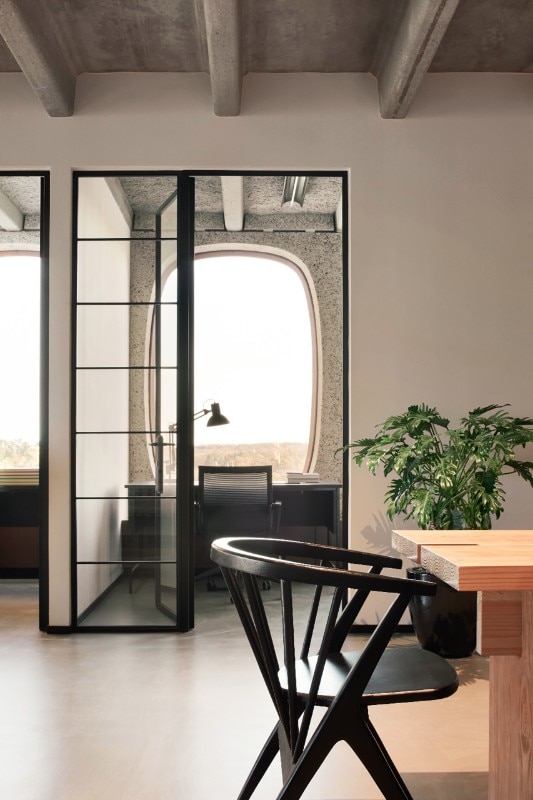
Warm-toned woods are paired with off white furnishings throughout. Lighting became an important part of the design, with soft shades casting brightness across the building’s concrete walls.
Another key element to the building’s interior concept was space to display art, and the practice will work alongside Brussels art galleries Rodolphe Janssen and Veerle Verbakel Gallery, artists Perry Roberts and Florian Tomballe and the Private Art Support Foundation to curate different areas.
“The character of the building, its history, its exceptional architecture, the spirit of the age in which it was built… it just fits,” said founder Stijn Geeraets.

